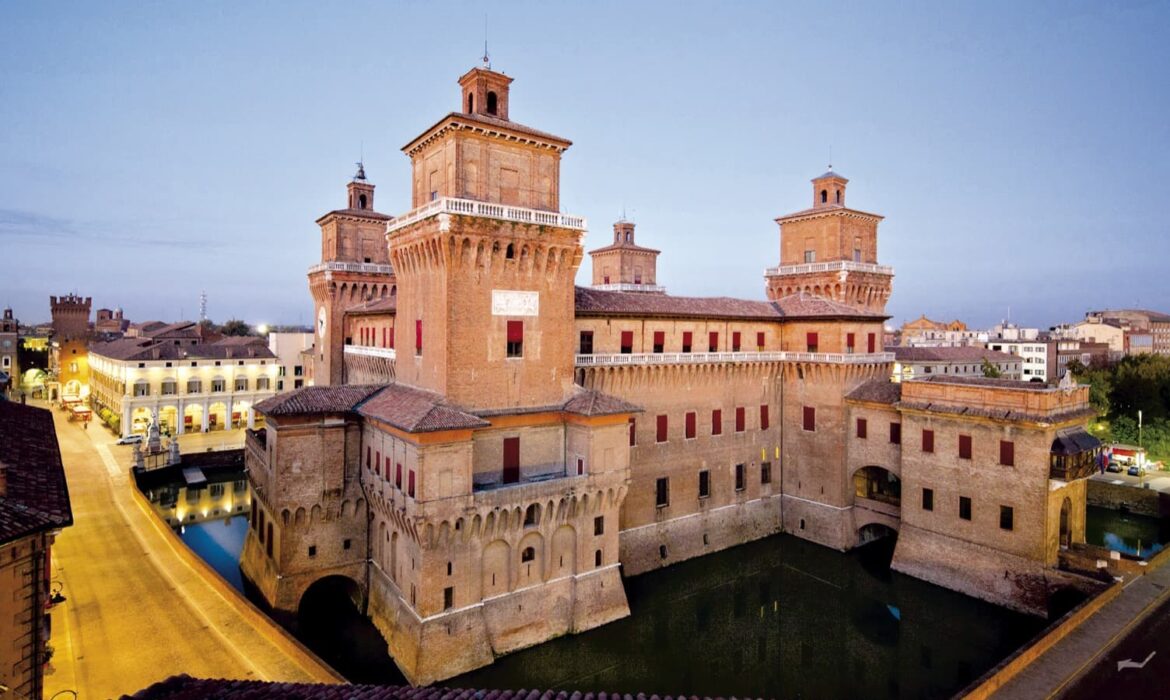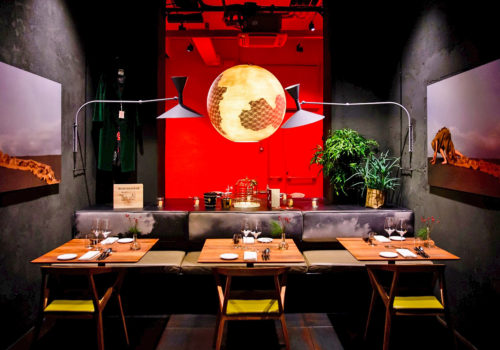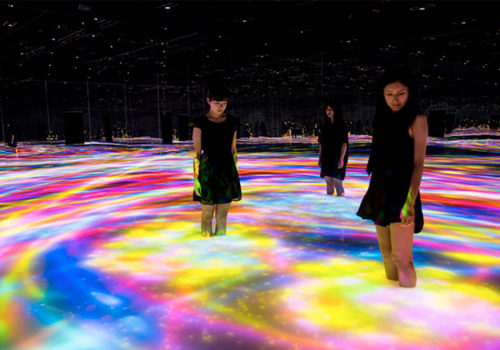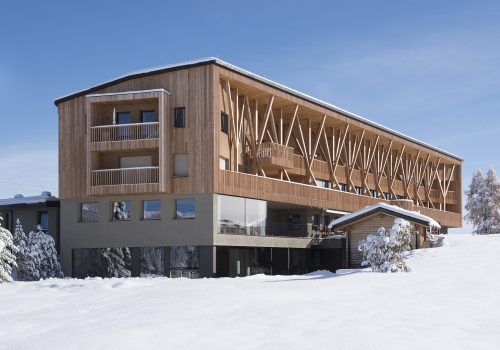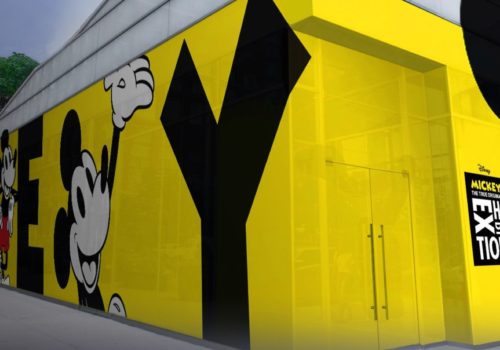Searching for hidden gems and the finest products in Italy’s food valley, in the Region with the highest concentration of DOP and IGP products
After visiting the Valle d’Aosta, with its valleys and mountains, soups and fontina cheese, Pantografo Magazine’s journey moves on to Emilia-Romagna, to discover places to visit when the risks posed by the Coronavirus pandemic subside.
It takes no more than a short walk through the heart of Bologna, with its elegant porticoes under red roofs, its shop windows displaying baskets of delicious fresh tortellini and kilos of fragrant mortadella, to instantly understand that there is great satisfaction for the taste buds in this region. The city of the two Towers in fact is the location for what has come to be defined as the “Gourmet Quadrangle”, the area of the city between Via Rizzoli, Via dell’Archiginnasio, Via Farini and Via Castiglione. The concentration of small gourmet shops in this area is very high. But the city of Bologna is not alone in offering such mouth-watering temptations: the entire region produces such a range and variety of specialities that it has earned the appellation of Food Valley of Italy, a place with an unusually high concentration of products certified as DOP (Protected Designation of Origin) and IGP (Protected Geographical Indication).

Bologna. Ph. © Greg Snell. Courtesy: Emilia Romagna Turismo
Between one tasting and another, there are plenty of monuments, historic towns and architectural works worth visiting. Remember in fact that this is the land of the d’Este, as well as the Farnese families, one of the longest reigning families in Europe which helped to shape the territory with suggestive architectural works
Reggio Emilia, which in recent years has experienced a major cultural awakening, is home to the Consorzio del Parmigiano Reggiano, which offers the possibility of visiting a cheese factory and watching how a wheel of cheese is made. You should also visit the many food outlets, perfect places to buy this excellent cheese at various stages of the aging process.
Then there’s Parma, which apart for being famous for the Prosciutto that bears its name (it is worth visiting the prosciutto factories at Langhirano, which boast the best climatic conditions for aging), also produces an excellent Coppa. Proclaimed UNESCO Creative City for Gastronomy in Italy, it has become the ambassador for the entire Food Valley. After tasting its specialities and visiting its main landmarks, such as the Palazzo della Pilotta, the Baptistry and the Duomo, Pantografo suggests a tour of the eight Food Museums (one day should be enough) scattered across the province of Parma. They include the Pasta Museum in Collecchio and the Museum of Culatello and Masalèn at Polesine Parmense. Before leaving this area, don’t miss the Salsamentaria Storica in Busseto, a boutique that also serves a cold cut and cheese board featuring local products.
If you like porcini mushrooms instead, it is worth going to Borgotaro, southwest of the itinerary described above. Porcini are particularly abundant in this zone and that is why it is home to the Consorzio del Fungo di Borgotaro, an IGP product. The centre of the town features the remains of the twelfth-century Castello, Romanesque churches and historic buildings (such as Palazzo Boveri). The valley, Val di Taro, also offers a number of itineraries built around its castles and natural landscape. Twenty minutes by car away from Borgotaro, for example, you will find the Castello di Compiano. This fortress, surrounded by a small Medieval town dating back to the ninth century, was for many years the centre of a small independent princedom. Now counting less than one thousand inhabitants, the town is home to the Gambarotta Collection, which includes seventeenth and eighteenth-century furniture and painting donated to the City. Also of interest is the Museum of the Orsanti, located in a deconsecrated church and dedicated to the city’s native wanderers, who in the mid-eighteenth century and through the mid-twentieth century, travelled the roads of Europe, earning their living by performing in town squares. What is there to eat after your tour? Don’t miss the Gnocchi with chestnuts and ricotta cheese, the Veal Valtarese-style, or the Guinea hen Castellana-style.

Castello di Compiano. Ph. © Mara Venturini. Courtesy: Emilia Romagna Turismo
In the area around Modena, with its historic city centre featuring a rich array of historic buildings such as the Palazzo Comunale, the Duomo and the Portici del Collegio, Pantografo suggests an itinerary that includes as many as sixteen Medieval and Renaissance castles located across the province, but not before enjoying a substantial breakfast of Tigelle and Prosciutto di Modena. Most interesting are the Castello di Formigine, the Rocca di Vignola, the Castello di Sestola and the Castello di Spezzano, where you can stop for a picnic in the nineteenth-century garden or begin a walking-cycling trail that leads from the Castle to the Nature Reserve of Salse di Nirano. The typical foods in the province of Modena include the Green Asparagus of Altedo, certified IGP with its own Consortium, which offers a recipe for a Tortino with quail eggs and green asparagus of Altedo, as well as an om Mezzelune made from a Brie and green asparagus of Altedo omelette.

Duomo and Ghirlandina, Modena. Ph. © Nacchio-Brothers. Courtesy: Emilia Romagna Turismo
From Altedo to Ferrara, the trip is short and a must-see. The city historically ruled by the Este family is one of the most elegant in the entire Region, and was declared a UNESCO World Heritage Site in 1995. Its Castello Estense, Palazzo Comunale, and Cathedral of San Giorgio alone are worth the visit. In addition, a tour of the Palazzo Schifanoia, the Monastery of Sant’Antonio in Polesine, the Basilica of Saint Francis, the Palazzo dei Diamanti, the Palazzina Marfisa d’Este and the Cemetery of La Certosa, to name just a few, will show you why the city deserves a special trip. Not to mention the many typical dishes you should try, from the Salama da sugo to the Cappellacci filled with squash, to the Pasticcio di Maccheroni, the Pampepato and the Torta di Tagliatelle.
To end the journey moving smoothly into the beauty of the natural landscape, it is easy to get from Ferrara to the Parco del Delta del Po, also acknowledged as a World Heritage Site for its entire ecosystem. Tailored for those who enjoy direct contact with nature, this is a trip that should be savoured across several days, to enjoy the forests, pine groves, bodies of sweet or salt water, deer and flamingos. Whether you are travelling by car or in a camper, bring a bike with you. And why not, the book by Gianni Celati titled “Verso la foce”, an account of his travels in search of the horizon, where the waters of the Po River meet the sea.
After visiting the Bosco della Mesola Nature Reserve, the Abbey of Santa Maria di Pomposa, the Isola dell’Amore (Love Island, the last stretch of land separating the Po River from the Sea), the Mouth of the Great River, the Valli di Comacchio, don’t forget to take home (or taste on the spot), the famous eels of Comacchio or the rice from the Delta del Po. And maybe bring back some local recipes, such as Grilled Eel, or Seafood Risotto in the Polesana style.

Museo Delta Antico, Comacchio. Ph. © Vanni Lazzari. Courtesy: Emilia Romagna Turismo.
Cover: Castello Estense, Ferrara. Ph. © Provincia di Ferrara. Courtesy: Emilia Romagna Turismo
Translated by Olga Barmine
© ALL RIGHTS RESERVED


